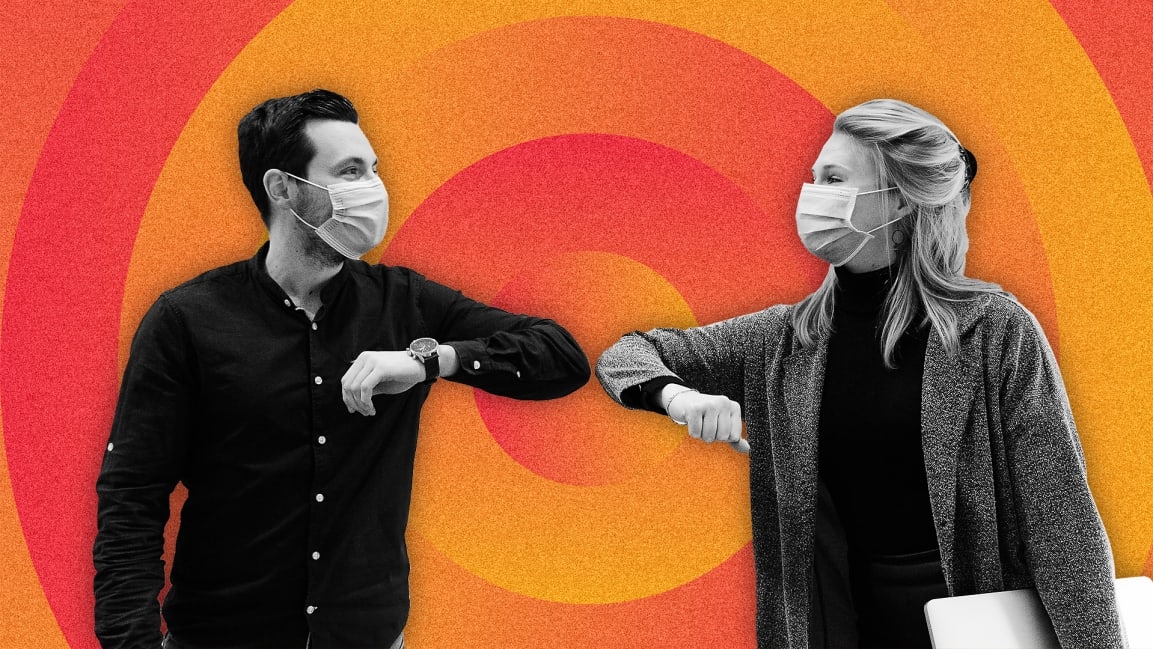Fearing a chaotic post-pandemic workplace? Fix it by going all in on this 1 thing
If we could sum up the key to effective management in the post-pandemic workplace it would be with one word: Communication.
To demonstrate the use of communication in the workplace, we’ve outlined a few guidelines. These specific management rules can help your organization not only search for best practices but seize this golden moment to take a closer look at your communication culture.
Rule 1: Communication is a process
With the exception of individuals whose job descriptions explicitly revolve around communication (like HR and public relations personnel), people tend not to consciously think about communication unless the lack of it is creating noticeable problems. “Noticeable” is the key word since, even if communication is suboptimal or dysfunctional, work can continue to stumble onwards in a state of benign neglect. Communication became a frequent media topic during the pandemic largely due to the problems that resulted from a failure to understand how it works as a process rather than just a function.
For new workplaces, it will be important for managers to think of communication as a process by which everything in a workplace happens, not just a function of relaying specific information to employees. Under this definition falls informal communication and its various subtypes—which received more attention during the pandemic due to its absence.
If your organization actively recognizes the loss of informal communication as a casualty in need of serious resuscitation, it can be considered more critically to be reformulated and restructured (not simply rescheduled). Communication as a process needs to be approached strategically, in terms of long-term goals, not just in terms of utility and specific tools, such as strictly holding meeting by Zoom or mainly corresponding by email.
Rule 2: Listen to motivate
A significant element of communication as a process is understanding what motivates your employees. The science shows that employees perform better when they are motivated and engaged, yet only 2 out of 10 employees before the pandemic felt they were managed in a way that motivated them to do good work. Productivity that’s hampered or lost as a result of a lack of employee engagement costs companies between $960 billion to $1.2 trillion each year. It’s clear that mismanaged communication approaches cost businesses and were lacking before the pandemic. If managers neglect it further, the effects will only become more serious.
The disruption of the pandemic added an additional challenge in that what builds up employee motivations has shifted and evolved. This also means the minority of employees who felt unmotivated by management styles before COVID-19 will only sink more into malaise after the pandemic. This potentially dramatic dip in motivation is another reflection of how people’s relationship with work—along with their needs and expectations—have changed.
Understanding how employees’ expectations, wants and needs, as well as the particulars that will motivate them, requires careful listening. It will be critical for organizations to integrate opportunities of listening into the new work environment. For example, this could look like setting up safe spaces for those wanting to air grievances or seeking more information about internal advancement.
Rule 3: Trust your employees to do the right thing
Organizations have a habit of trying to control events that are often uncontrollable. What we mean by this is that when one employee does something that is slightly questionable behavior or provokes an issue (or incurs a cost), companies will strive to fix it by way of new protocols and procedures, taking away degrees of employee autonomy and flexibility.
In reality, this one event may have just been a one-time occurrence—and it might never happen again with a little more knowledge-sharing. But the need to control and to ensure it never happens again is a deep-seeded urge and management responds by instating new rules.
For example, let’s say that during the pandemic an employee showed up to a Zoom meeting wearing pajamas. Not a good wardrobe choice, and understandably, management does not want this to be a trend. So they put into place a new set of rules explicitly detailing what kind of dress is encouraged during Zoom meetings. Now they’ve set in stone restrictions (to a potentially one-off incident) that may strike employees as odd or feel unnecessarily prohibitive to some workers. It’d be much better to simply communicate to the individual employee the need to maintain a certain standard of professionalism despite the overall shift to more casual attire. If it happens again, then have the conversation with the larger group without making more rules and regulations.
The desire for autonomy and freedom will be one of the most defining features of the post-COVID-19 workforce. Exactly what that autonomy looks like for each employee will differ. In response, leaders must listen closely to their workers. A good place to start is communicating what your general expectations are and then trust you reports to do the right thing.
Rule 4: Invest in education
From our experience, we’ve seen how much emphasis leaders often place on extrinsic sources of motivation, and turning to results-based methods like punishment and reward in the workplace. What is less emphasized is the power of intrinsic motivation. Educating managers is one method to start a habit of intrinsic reward.
As discussed, organizations can start with a communication strategy that prioritizes listening, trust, and inspiring employees through whatever factors authentically motivate them. Once the strategy is created, then comes the need to create an education program so managers know how to implement that strategy at the work unit level.
Also worth mentioning is how managers are not always inviting towards education and guidance efforts, because they do not see the need for it. Company leads, who are promoted based on past experience to management levels, assume their past success indicate future success. Sadly, this is often not the case. Before the pandemic, organizations were able to function despite managers’ lack of effective leadership ability—perhaps not as successfully as they might have been, but it was often just accepted as the way the workplace worked. But now the world, and the demands on management, has changed.
Employees have new expectations of their leadership. The business world, the nonprofit world, and the government world have all experienced change, and despite hopes and prayers, nothing is going back to the way it was. So, making sure managers understand the new world and the changed expectations will be important so they welcome new educational opportunities to become more effective leaders. After all, in this new environment doing something because it’s how it has always been done is just not going to cut it—for organizations as well as for their managers and leaders.
This isn’t to say all the responsibility should fall on managers. Communication is a two-way street. As the world changes rapidly post-pandemic, it will be important for employees to also have effective communication skills. Furthermore, communication is simply more difficult in a hybrid environment, when casual face-to-face interactions are missing, and employees put in the effort to voice their concerns.
The best way to educate employees will depend on how employees are most prepared to learn and what will their working conditions look like. Adjust your employee education to who will be remote, who will be in-office, and who will be a combination of the two; further, consider which team members are public-facing and which work mostly virtually.
During the pandemic, very few organizations ever had the luxury to do any kind of deep analysis of what worked and what didn’t, including the success of their communication. Therefore now is time for all members of an organization to step back, think strategically, and communicate to navigate this new landscape.
Rebecca Weintraub, PhD is a clinical professor of communication and director of the online Master of Communication Management Program at the Annenberg School for Communication and Journalism at the University of Southern California.
Steven Lewis is a renowned entertainment industry strategist and news and documentarian.
They are currently co-writing InCredible Communication, to release in 2022, that brings the combined experience of more than 75 years of real-world, evidence-based knowledge to the art of effective business communication.
(42)



